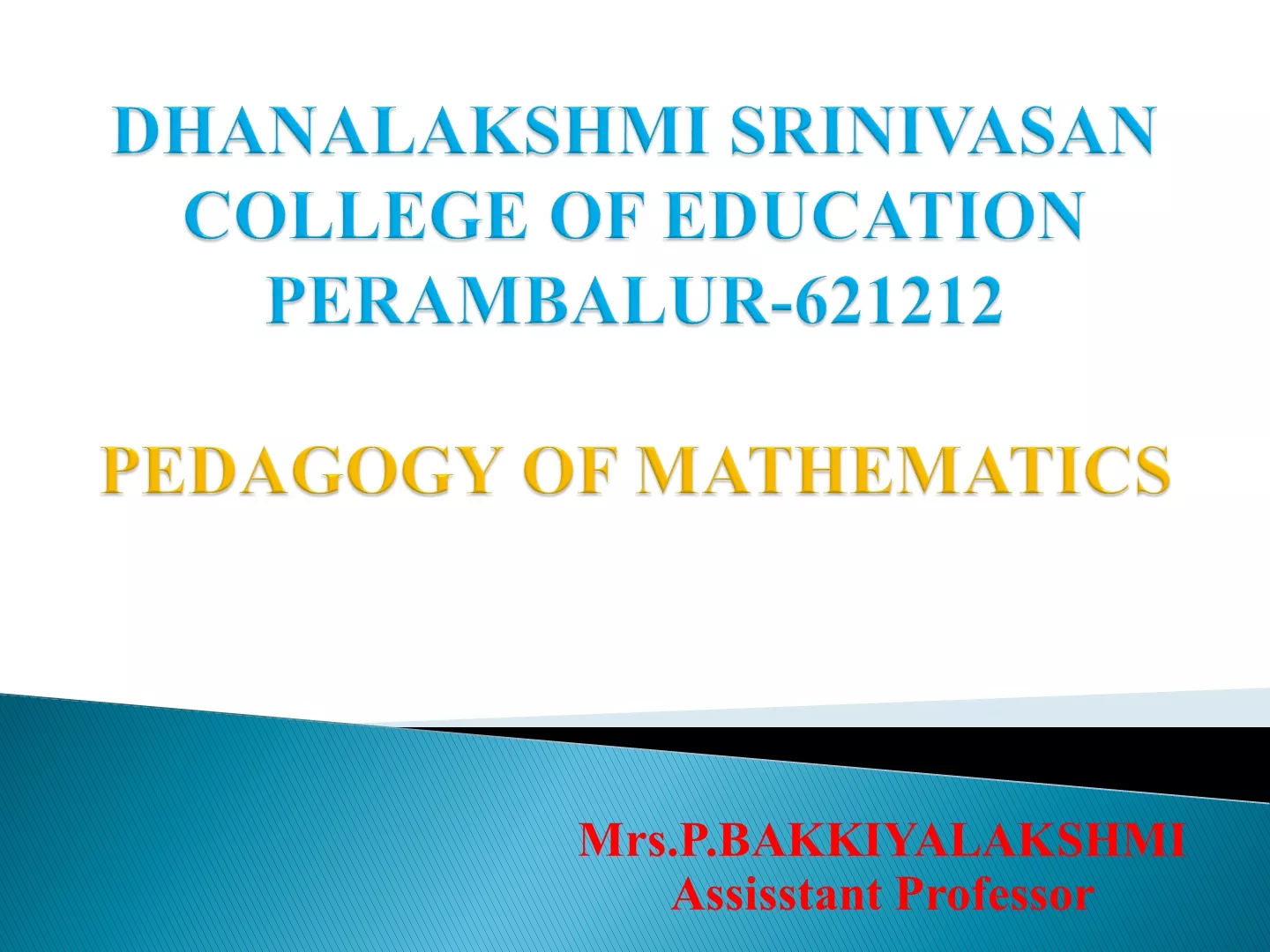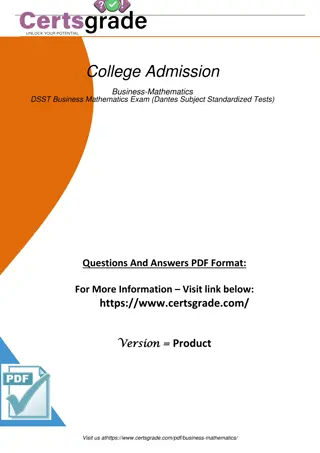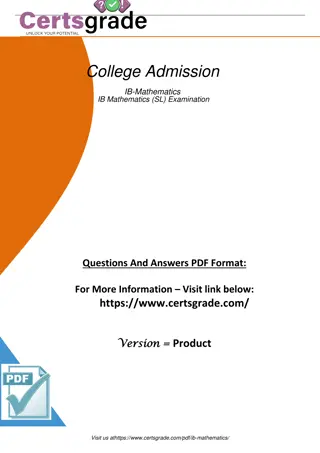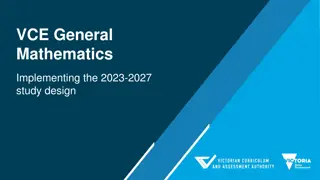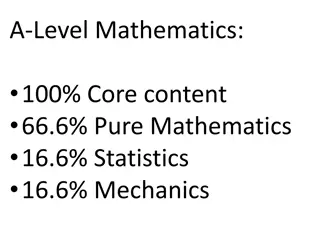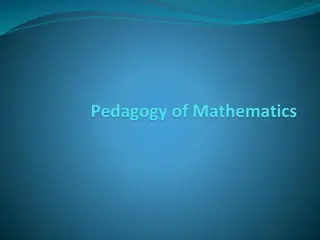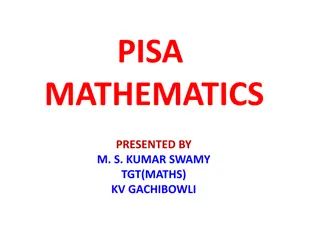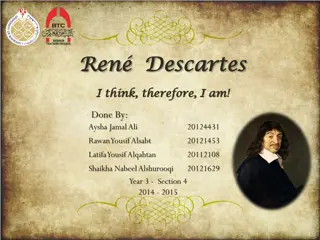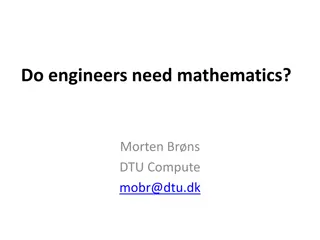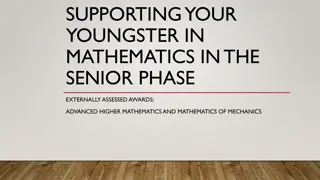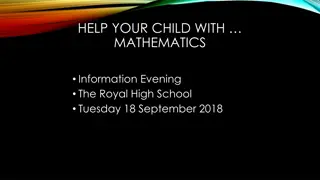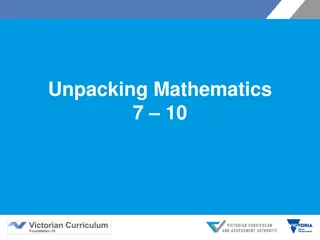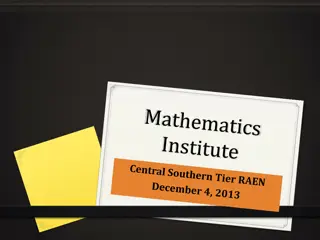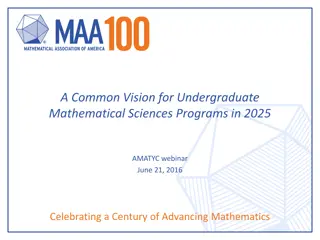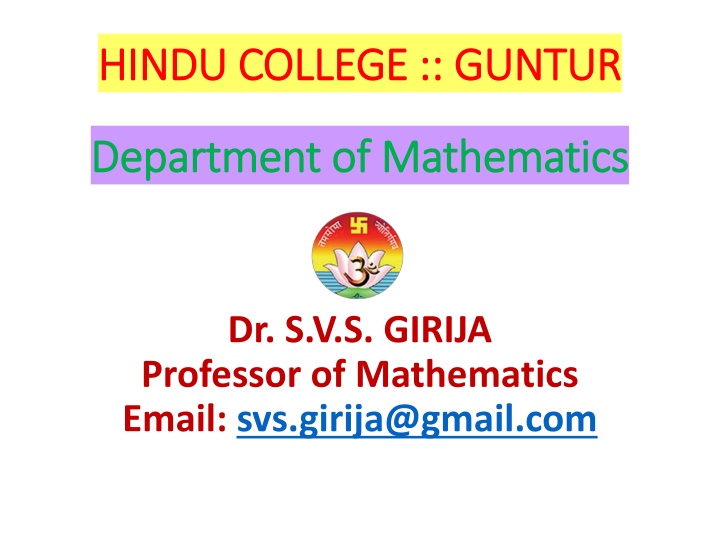
Remarkable Story of Srinivasa Ramanujan: The Mathematical Genius
Delve into the extraordinary life of Srinivasa Ramanujan, India's greatest mathematician, known for his exceptional brilliance and achievements. Born in 1887, his mathematical prowess flourished against all odds, leading to groundbreaking discoveries and the famous Ramanujan's Notebooks. Explore his journey from humble beginnings to global recognition, including his impactful time at Cambridge University.
Download Presentation

Please find below an Image/Link to download the presentation.
The content on the website is provided AS IS for your information and personal use only. It may not be sold, licensed, or shared on other websites without obtaining consent from the author. If you encounter any issues during the download, it is possible that the publisher has removed the file from their server.
You are allowed to download the files provided on this website for personal or commercial use, subject to the condition that they are used lawfully. All files are the property of their respective owners.
The content on the website is provided AS IS for your information and personal use only. It may not be sold, licensed, or shared on other websites without obtaining consent from the author.
E N D
Presentation Transcript
HINDU COLLEGE :: GUNTUR HINDU COLLEGE :: GUNTUR Department of Mathematics Department of Mathematics Dr. S.V.S. GIRIJA Professor of Mathematics Email: svs.girija@gmail.com
The famous English poet in Stratford upon Avon said, People thy work is incomplete till thee thank the lord and thy master which means that a student work is incomplete until he/she thank the almighty and his/her teacher.
26-04-1920 22-12-1887 RAMANUJAN RAMANUJAN THE MAN THE MAN AND AND THE MATHEMATICIAN THE MATHEMATICIAN
INTRODUCTION Srinivasa Ramanujan is the greatest mathematician India has produced in recent years. Any other Indian is distantly comparable to Ramanujan in the matter of brilliance and greatness of his achievement.
He was born on December 22,1887 at Erode in Coimbatore district of Tamilnadu. There was nothing special in the family history of his parents to account for the outstanding mathematical ability.
EDUCATION He completed school education at Kumbakonam. Signs of his special gifts: 1.Distribution of mangoes 2.Certainity , uncertainity in Mathematics 3.Mastered books like Euclid s Geometry and Loney s Trigonometry 4.His real encounter began when he came across SYNOPSIS by George Carr. This reflects his self- education
RAMANUJANS NOTEBOOKS As a a part of the discipline Ramanujan maintained a careful and systematic record of his findings. Later his achievements were published in collected form and called as RAMANUJAN S NOTEBOOKS.
ARRIVAL IN CAMBRIDGE: A letter containing 120 results to Hardy made Hardy to get Ramanujan over to Cambridge. Ramanujan arrived in Cambridge in April, 1914.
RAMANUJAN-THE MATHEMATICIAN: 1.Highly Composite Numbers: Ex: 6 has four divisors. 2000 has 20 divisors but 360 has 24 divisors. 2.He discovered at least three formulae for the number of primes less than a given number X and is denoted by R(X).
3.Ramanujan proposed a problem to himself. What sets of positive integers a,b,c,d can every positive integer be expressed as ax2+by2+cz2+du2? He showed that this can be done only for 55 different sets of values of a,b,c,d . Ex: 1007= 312+62+32+12 =12+92+52+4.152 =32+2.22+5.62+10.92
4.Formula for No. partitions of n, p(n): A partition of n means an expression of n as a sum of positive integers. Ex: 5,4+1, 3+2, 3+1+1 ,2+2+1 , 2+1+1+1 , and 1+1+1+1+1. p(5)=7 5.RAMANUJAN S NUMBER: 1729=123+13=103+93 Ramanujan was Analytical Number Theorist gifted with a remarkable intution.
RAMANUJAN- THE MAN Ramanujan was elected Fellow of the Royal Society in May, 1918 and a Fellow of the Trinity College, Cambridge on October 13,1918.Fellowship carried a honorarium of 250 a year and Madras University granted him another 250 a year. He felt that it was too much for him. He diverted the funds 50 to his parents and remaining for the studies of poor boys and orphans.
MEMORIAL OF GENIUS: In 1927 the Collected Papers Of SRINIVASA RAMANUJAN was published by the Cambridge University Press. It contains 37 papers and 58 questions posed by Ramanujan. Hardy s Obituary Notice of 15 pages first published in the proceedings of the London Mathematical Society. Madras University published his papers in collected form
DEMISE OF RAMANUJAN: Ramanujan arrived in India on March 27, 1919 with great suffering from Tuberculosis . In his last letter to Hardy dated January 12,1920 Ramanujan communicated his latest and last work on new functions, MOCK THETA- FUNCTIONS . Ramanujan breathed his last on April 26,1920.
THE FIELDS MEDAL THE FIELDS MEDAL No NOBEL NOBEL prize for mathematics
An An Interesting Interesting story behind the constitution of story behind the constitution of the medal the medal FRIENDSHIP HOSTILITY Mittag Leffler ALFRED-NOBEL JOHN CHARLES FIELD
About John Charles Fields About John Charles Fields Born: 14 May 1863 in Hamilton, Ontario, Canada Died: 9 Aug 1932 in Toronto, Ontario, Canada Fields attended Hamilton collegiate Institute and proved to be an outstanding pupil Received gold medal for mathematics in B.A(Toronto University) Received gold medal at Berlin where he studied later (1892 to 1900).
Elected a fellow of the Royal Society, of Canada in 1907 Elected a fellow of the Royal Society, of London in 1913 Honoured by being president of the International congress of Mathematicians held at Toronto in 1924 He proposed to found two gold medals in mathematics Vice President of International congress of Mathematicians at Bologna in 1928 President of Royal Canadian Institute from 1919 to 1925
History of Fields Medals History of Fields Medals concrete idea was given in the minutes of meeting of the above committee on February 24, 1931 Fields medal was to be given for mathematicians for the work already done and also as an encouragement for future achievements. Fields Medal was awarded for the first time in Oslo in 1936. The awardees were Lars Ahlfors of Finland and Jesse Douglas of USA. Latest ICM 2018 was organized in Brazil and next ICM 2022 will be held in St Petersburg, Russia.
About the medal itself About the medal itself A prize of 15,000 Canadian dollars is awarded with each Fields Medal On one side there is the head of Archimedes. The Latin inscription from the Roman poet Manilus surrounding his image may be translated to pass beyond your understanding and make yourself master of the universe The inscription on the reverse may be translated Mathematicians, having congregated from the whole world, awarded (this medal) because of outstanding writings
Conclusion Conclusion It may be concluded lack of Nobel prize for mathematics made Fields constitute one named after him as Fields medal
C dric Villani (born 5 October 1973, Brive-la-Gaillarde, Corr ze) is a French mathematician working primarily on partial differential equations and physics. Stanislav Konstantinovich Smirnov (Russian: C ; born 3 September 1970) is a Russian mathematician currently working at the University of Geneva, who was awarded the Fields Medal in 2010. His research focuses on the fields of complex analysis, dynamical systems and probability theory.[1][2] Ng B o Ch u Vietnamese pronunciation: [ o a c ] (born June 28, 1972)[3] is a Vietnamese and French mathematician at the University of Chicago, best known for proving the fundamental lemma for automorphic forms proposed by Robert Langlands and Diana Shelstad. He is the first Vietnamese to receive the Fields Medal.[4][5] Elon Lindenstrauss (Hebrew: ,born August 1, 1970) is an Israeli mathematician, and a winner of the 2010 Fields Medal.[1][2] Since 2004, he has been a professor at Princeton University. In 2009, he was appointed to Professor at the Mathematics Institute at the Hebrew University.
Fields Medalists 2018 Fields Medalists 2018 For the proof of the boundedness of Fano varieties and for contributions to the minimal model program. Caucher Birkar
Fields Medalists 2018 (contd.) Fields Medalists 2018 (contd.) For contributions to the theory of optimal transport and its applications in partial differential equations, metric geometry and probability. Alessio Figalli
Fields Medalists 2018 (contd.) Fields Medalists 2018 (contd.) For transforming arithmetic algebraic geometry over p-adic fields through his introduction of perfectoid spaces, with application to Galois representations, and for the development of new cohomology theories. Peter Scholze
Fields Medalists 2018 (contd.) Fields Medalists 2018 (contd.) For his synthesis of analytic number theory, homogeneous dynamics, topology, and representation theory, which has resolved long- standing problems in areas such as the equidistribution of arithmetic objects. Akshay Venkatesh
ICTP Ramanujan Prize The ICTP Ramanujan Prize for Young Mathematicians from Developing Countries is a mathematics prize awarded annually by the International Centre for Theoretical Physics in Italy. The prize is named after the Indian mathematician Srinivasa Ramanujan. It was founded in 2004,[1]and was first awarded in 2005. The prize is awarded to a researcher from a developing country less than 45 years of age who has conducted outstanding research in a developing country.[2]The prize is supported by the Ministry of Science and Technology (India) and Norwegian Academy of Science and Letters through the Abel Fund, with the cooperation of the International Mathematical Union.
2005 Marcelo Viana, Brazil[3] 2006 Ramdorai Sujatha, India[4] 2007 Jorge Lauret, Argentina[5] 2008 Enrique Pujals, Argentina/Brazil[6] 2009 Ernesto Lupercio, Mexico[7] 2010 Shi Yuguang, China[8] 2011 Philibert Nang, Gabon[9] 2012 Fernando Cod Marques, Brazil[10] 2013 Tian Ye, China[11] 2014 Miguel Walsh, Argentina[12] 2015Amalendu Krishna, India[13] 2016 Chenyang Xu, China 2017 Eduardo Teixeira, Brazil[14][15] 2018 Ritabrata Munshi, India[16] 2019 Ho ng Hi pPh m (vi), Vietnam[17][18] 2020 Carolina Araujo, Brazil[19] 2021 Neena Gupta, India[20]
JAI HIND

